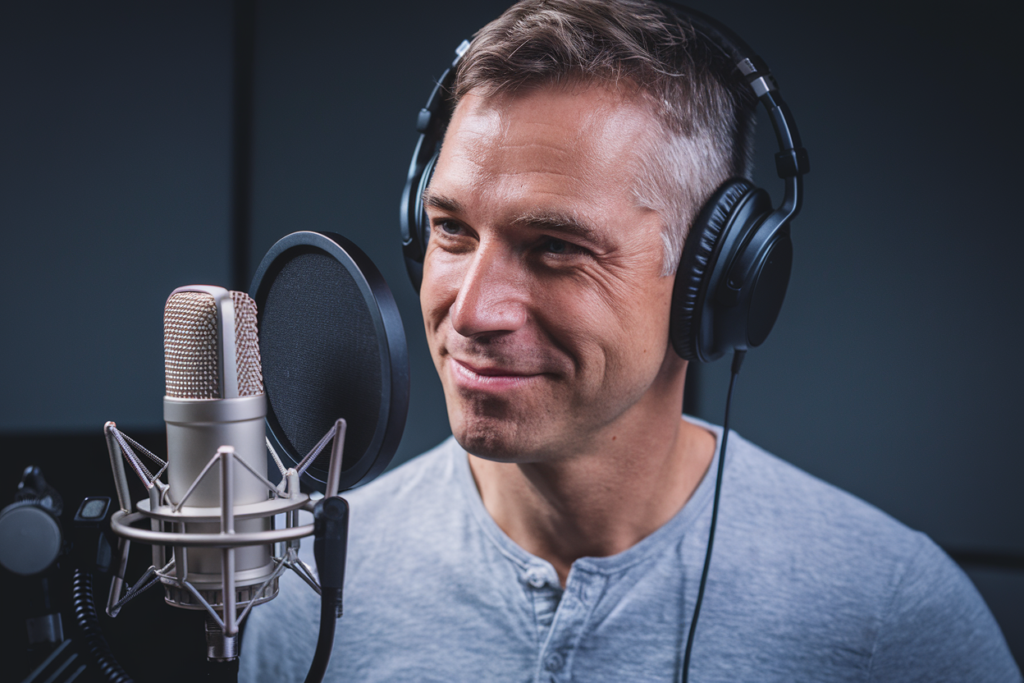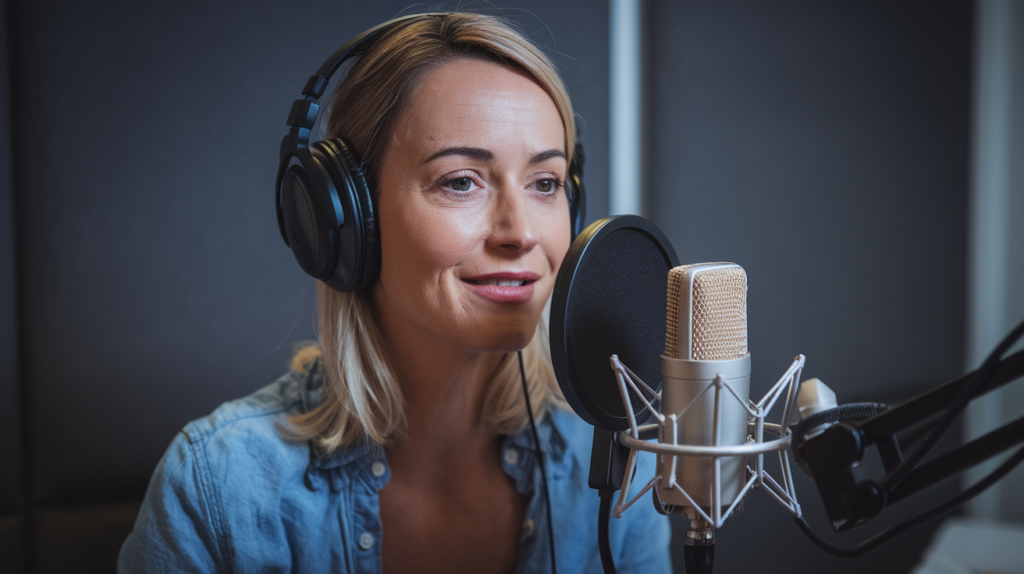Key Takeaways
- Lip Sync Accuracy is Essential: Achieving precise lip sync in British English dubbing enhances viewer engagement and emotional impact, making the experience more immersive.
- Skilled Voice Artists Matter: Talented voice actors are crucial for aligning audio with character movements, as they understand timing, emotion, and cultural nuances.
- Utilize Technology Wisely: Advanced software tools can improve synchronization but should complement the artistry of skilled voice talent to achieve the best results.
- Techniques to Enhance Lip Sync: Focus on timing and pacing adjustments, effective voice matching, and phonetic awareness to create a seamless audio-visual connection.
- Address Cultural Nuances: Understanding local expressions and regional accents is vital for authenticity in British English dubbing projects.
- Stay Updated on Trends: Emerging technologies like AI-driven tools and immersive environments are shaping the future of dubbing, offering new ways to enhance performance quality.
Ever watched a dubbed film and wondered why the characters’ lips seem out of sync with their words? Achieving lip sync accuracy in British English dubbing is more than just matching sounds; it’s about creating an immersive experience that keeps viewers engaged. If you’re involved in voice-over work or production, mastering this skill can set your projects apart.
Overview of Lip Sync Accuracy
Achieving lip sync accuracy in British English dubbing presents unique challenges. It’s not just about aligning sound with visuals; it involves crafting an authentic experience for the audience. You want your voiceover to resonate seamlessly with the characters on screen, making it feel as though they’re actually speaking those words.
Effective lip sync requires skilled voice artists who understand the nuances of timing and emotion. Voice actors must carefully consider each syllable’s delivery, ensuring it matches the mouth movements on screen while conveying the intended feelings. This attention to detail enhances viewer immersion and keeps them engaged throughout.
Additionally, technology plays a significant role in this process. Advanced software can help analyze timing and synchronization, allowing for precise adjustments during post-production. However, relying solely on technology isn’t enough; talented voice over actors bring essential artistry that cannot be replicated by machines alone.
When hiring a voice talent for dubbing projects, it’s important to look for individuals with experience in achieving lip sync accuracy. Their expertise ensures that every word aligns perfectly with character movement, creating a polished final product that captivates audiences.
By prioritizing these elements—skilled voice artists and effective technology—you pave the way for exceptional lip sync accuracy in your projects.
Importance of Lip Sync in Dubbing
Lip sync accuracy plays a critical role in the success of dubbing projects. Achieving this precision not only enhances viewer engagement but also helps convey the intended emotions and narratives effectively.
Audience Perception
Audience perception hinges on the seamless integration of voice with visuals. When lip sync matches perfectly, viewers immerse themselves in the story without distraction. Discrepancies can break this immersion, leading to confusion or disengagement. Consider how often you notice mismatched dialogue during foreign films; it detracts from your overall experience. Skilled voice artists understand this dynamic and deliver performances that align closely with character movements, ensuring a captivating viewing experience.
Emotional Impact
The emotional impact of dubbing is profound when lip sync accuracy is prioritized. Mismatched sounds can dilute the emotional resonance intended by creators. Voice actors who master timing and expression enhance characters’ authenticity, allowing audiences to connect deeply with their journeys. For instance, a well-timed laugh or gasp can heighten tension or comedic relief, making scenes more memorable. Effective lip syncing ensures that these moments land as intended, reinforcing emotional ties between characters and viewers.
Achieving lip sync accuracy isn’t just about technical skill; it’s about creating an authentic connection that resonates with your audience on multiple levels.
Techniques for Achieving Lip Sync Accuracy
Achieving lip sync accuracy in British English dubbing requires a blend of artistry and technique. Understanding specific methods can enhance the effectiveness of your projects.
Timing and Pacing
Timing plays a crucial role in ensuring that audio matches visual elements seamlessly. You’ll want to analyze the original performance closely, noting key moments where characters speak or express emotions. Adjusting the timing of voice delivery helps align with mouth movements on screen. Voice actors often practice their lines repeatedly, focusing on pacing to match character actions precisely. This attention to rhythm creates a more immersive experience for viewers.
Voice Matching
Voice matching involves selecting voice talent whose vocal qualities closely mirror those of the original actor. When you choose voice artists with similar tonal characteristics, it enhances audience recognition and emotional impact. Pay attention to pitch, resonance, and speaking style when casting your voice over actors. Effective voice matching fosters a natural connection between visuals and audio, making it easier for audiences to engage with the story being told.
Phonetic Considerations
Phonetics significantly influence how dialogue aligns with animated mouths or real-life performances. Understanding phonetic nuances allows you to adjust scripts so they fit within specific mouth shapes during speech sounds. Certain sounds may require additional emphasis or slight modifications in pronunciation for better synchronization with visual cues. Skilled voice artists who grasp these subtleties contribute greatly to achieving flawless lip sync accuracy while maintaining character authenticity.
By applying these techniques—timing and pacing adjustments, careful voice matching, and phonetic awareness—you can elevate your dubbing projects significantly. Each step helps create an authentic connection that resonates deeply with audiences while ensuring clarity of narrative through meticulous alignment of sound and image.
Challenges in British English Dubbing
Achieving lip sync accuracy in British English dubbing presents unique challenges that require careful attention to detail.
Cultural Nuances
Cultural nuances play a significant role. Understanding local expressions and idioms is essential for voice artists to ensure authenticity. When a character uses slang or cultural references, voice actors must convey the same meaning while fitting the mouth movements of the original performance. This often involves adapting scripts so they resonate with UK audiences without losing the essence of the original dialogue.
Regional Accents
Regional accents present another hurdle in British English dubbing. The UK boasts a rich tapestry of accents, from Cockney to Geordie, each carrying distinct phonetic characteristics. Voice talent needs expertise in these variations to match characters accurately. Selecting voice actors who embody these accents enhances credibility and immersion for viewers. If an actor misrepresents an accent, it can lead to misunderstandings or pull audiences out of the narrative.
Navigating these challenges requires skilled voice artists who not only understand timing but also grasp cultural contexts and regional distinctions within British English dubbing.
Future Trends in Dubbing Technology
Dubbing technology evolves rapidly, shaping how you experience voiceovers. Emerging innovations promise to enhance lip sync accuracy and overall production quality.
AI-driven tools streamline the dubbing process by analyzing visual elements and automating timing adjustments. These advancements allow voice artists to focus on performance while ensuring alignment with character movements. Imagine a world where artificial intelligence assists in perfecting your project’s audio-visual integration.
Real-time collaboration platforms are gaining traction, enabling seamless communication between voice actors and directors. Such tools foster creativity, allowing for immediate feedback during recording sessions. You can expect faster turnaround times without compromising quality when teams work together effectively.
In addition to software improvements, immersive technologies like virtual reality (VR) offer new avenues for storytelling. Voice talent can now record performances within virtual environments that mimic real-life scenarios. This approach enhances emotional delivery and engages audiences on a deeper level.
Moreover, adaptive audio technology adjusts dialogue based on viewer preferences or cultural contexts. It ensures that global audiences receive content tailored to their linguistic needs while retaining the essence of the original material.
As these trends develop, they’ll redefine standards in British English dubbing and beyond. Staying informed about these advancements positions you to make better decisions when selecting voiceover talent for your projects—ensuring your audience remains captivated from start to finish.
Conclusion
Achieving lip sync accuracy in British English dubbing is essential for creating a compelling viewing experience. By prioritizing skilled voice artists who understand timing and emotional delivery, you enhance the overall quality of your projects. Embracing technology while valuing the artistry of vocal performances fosters authenticity and connection with audiences.
As you navigate the complexities of dubbing, remember that cultural nuances and regional accents play a significant role in resonating with viewers. Staying informed about emerging trends can help you adapt your approach and elevate your productions. Focusing on these aspects will ultimately lead to more engaging narratives that captivate audiences across diverse platforms.
Frequently Asked Questions
What is lip sync accuracy in British English dubbing?
Lip sync accuracy refers to the precise synchronization of voice audio with the mouth movements of characters on screen. In British English dubbing, it’s crucial for creating an immersive viewing experience, ensuring that the emotional tone and timing align with the visuals.
Why is lip sync important for dubbing projects?
Achieving accurate lip sync enhances viewer engagement by making dialogue feel natural and authentic. Discrepancies between voice and visuals can confuse audiences, reducing their connection to the narrative and characters.
What skills do voice artists need for successful dubbing?
Voice artists must master timing, emotion, and phonetic awareness. They should be able to analyze original performances, match vocal qualities to those of original actors, and adjust scripts for smooth speech alignment with character movements.
How does technology aid in achieving lip sync accuracy?
Advanced software helps analyze timing between audio and visual elements. Innovations like AI-driven tools automate adjustments while real-time collaboration platforms enhance creativity during recordings, all contributing to improved production quality.
What challenges exist in British English dubbing?
Unique cultural nuances, regional accents, and local expressions present challenges. Voice talent must adapt scripts authentically while mastering variations from different UK regions to ensure clarity and resonance with British audiences.
How do future trends impact dubbing technology?
Future trends include AI tools that streamline processes for better timing accuracy, real-time collaboration enhancing creativity during sessions, immersive technologies like VR enhancing storytelling, and adaptive audio adjusting dialogue based on viewer preferences or contexts.







